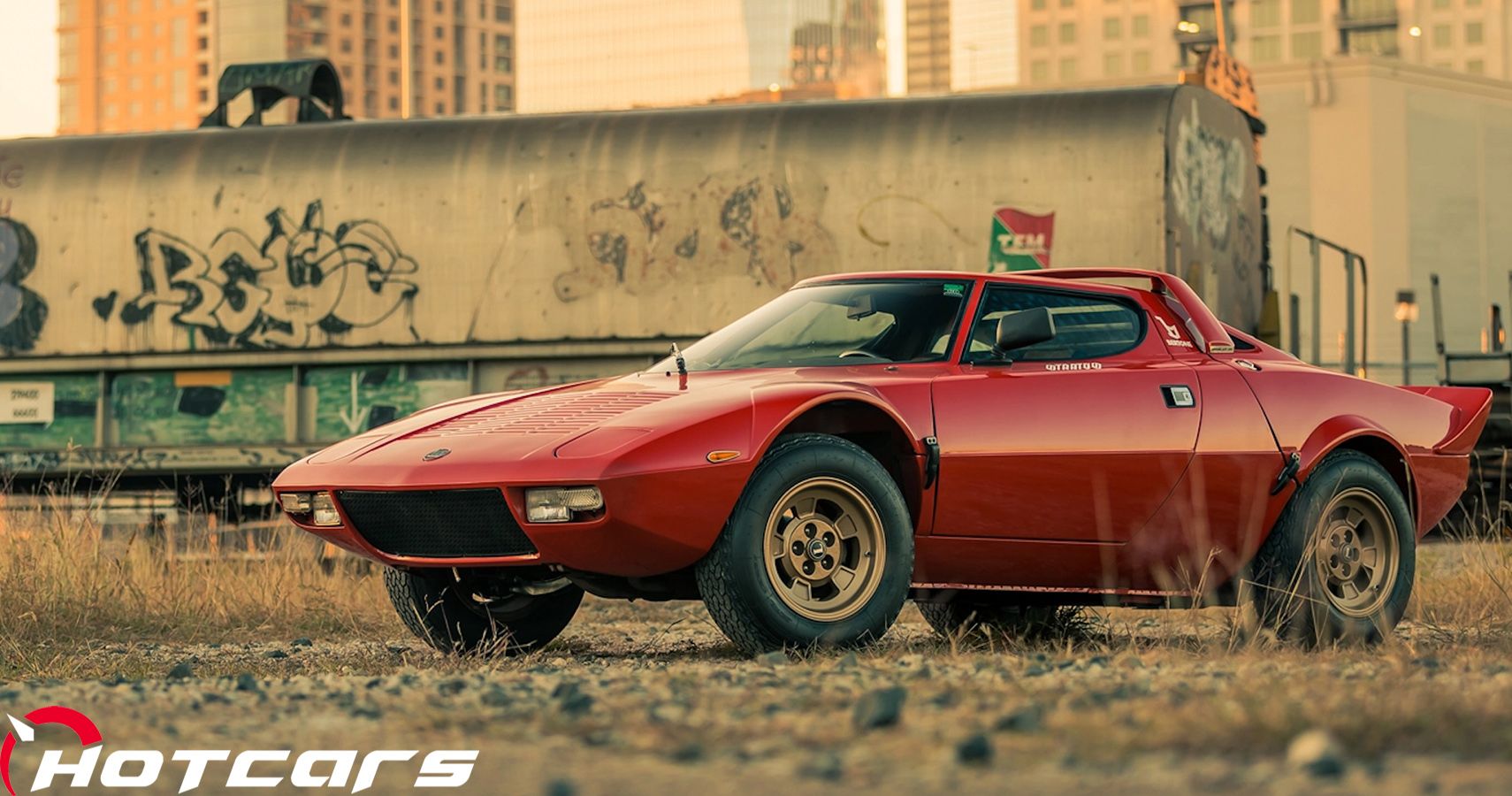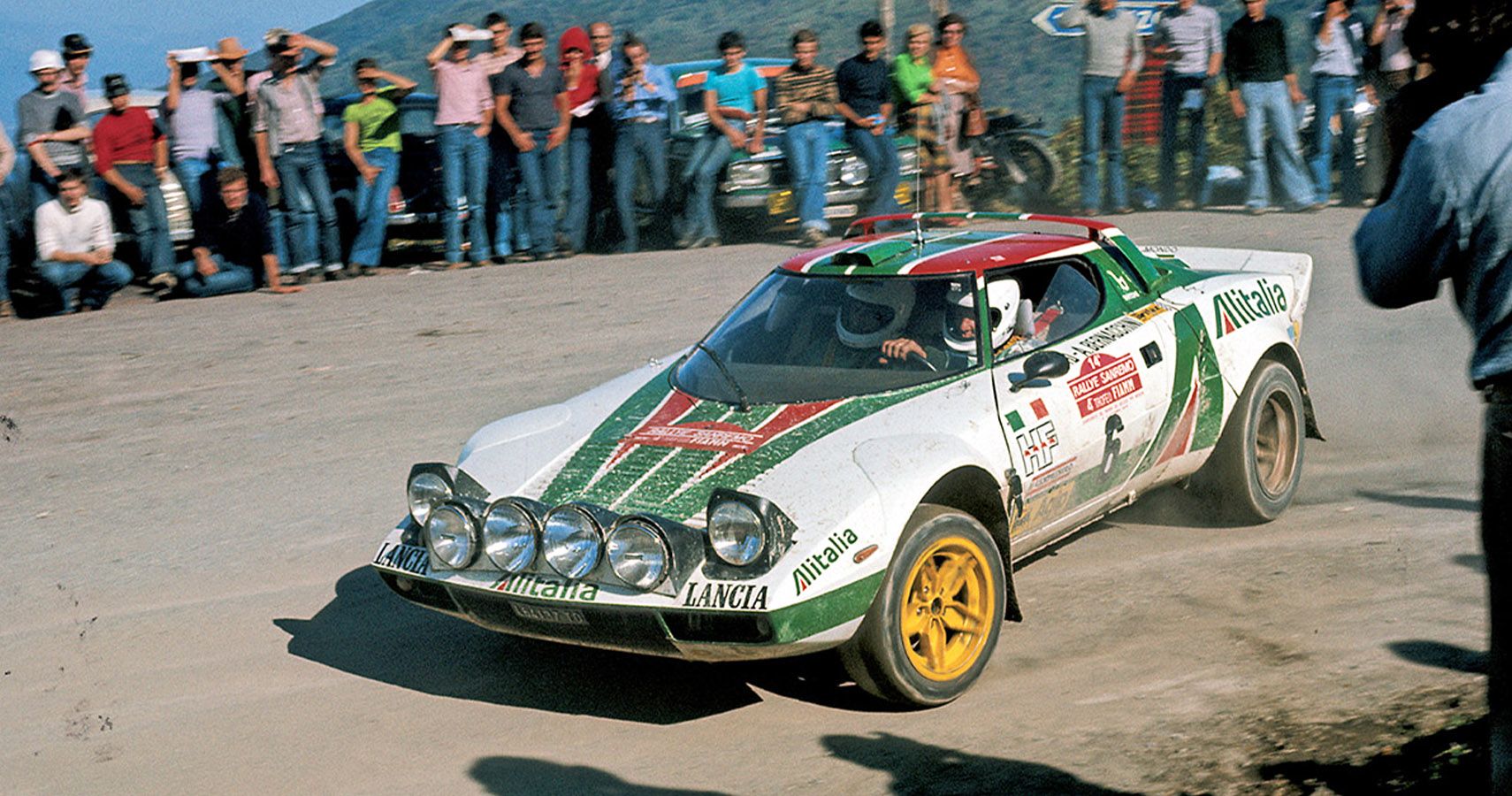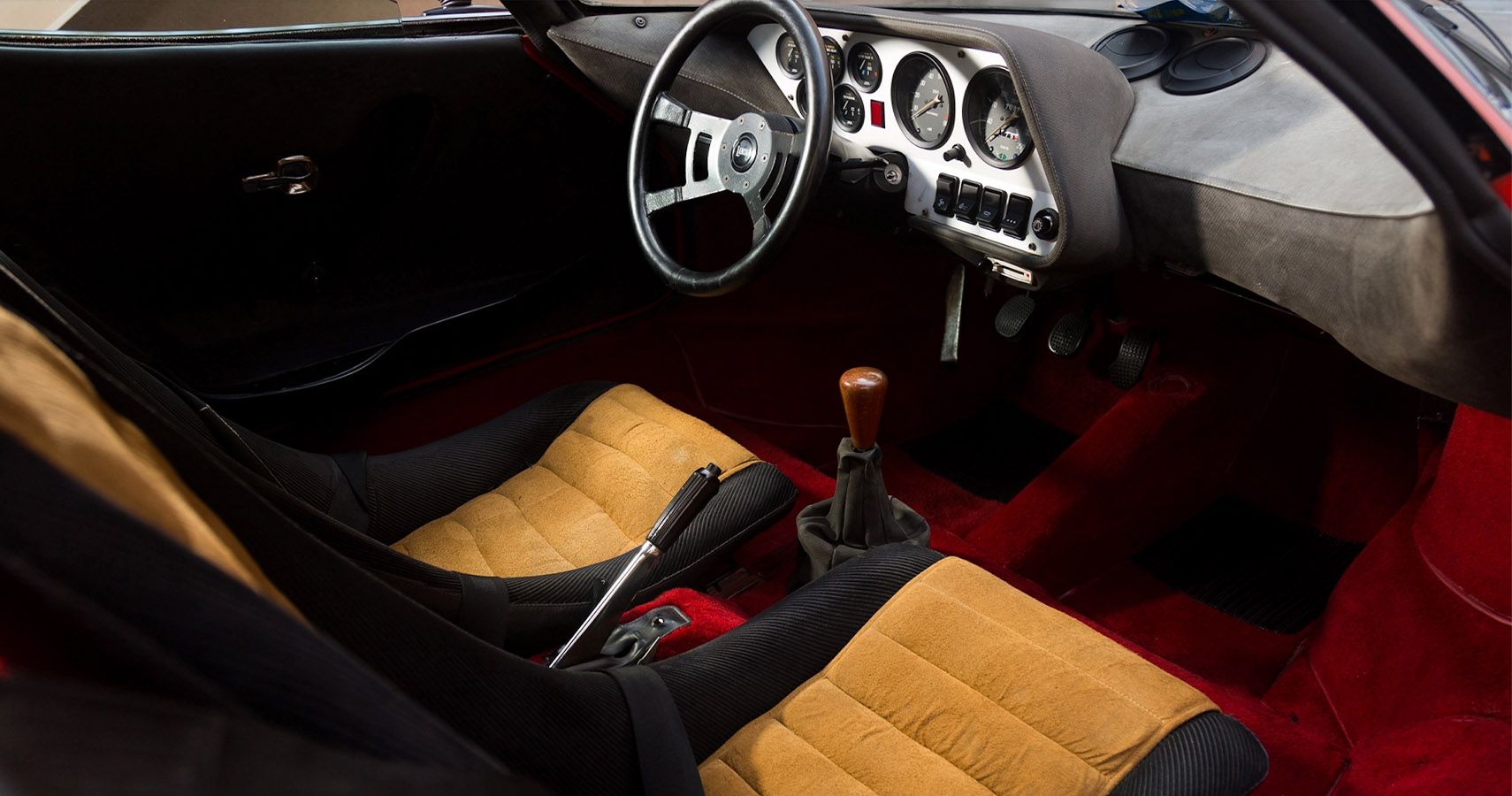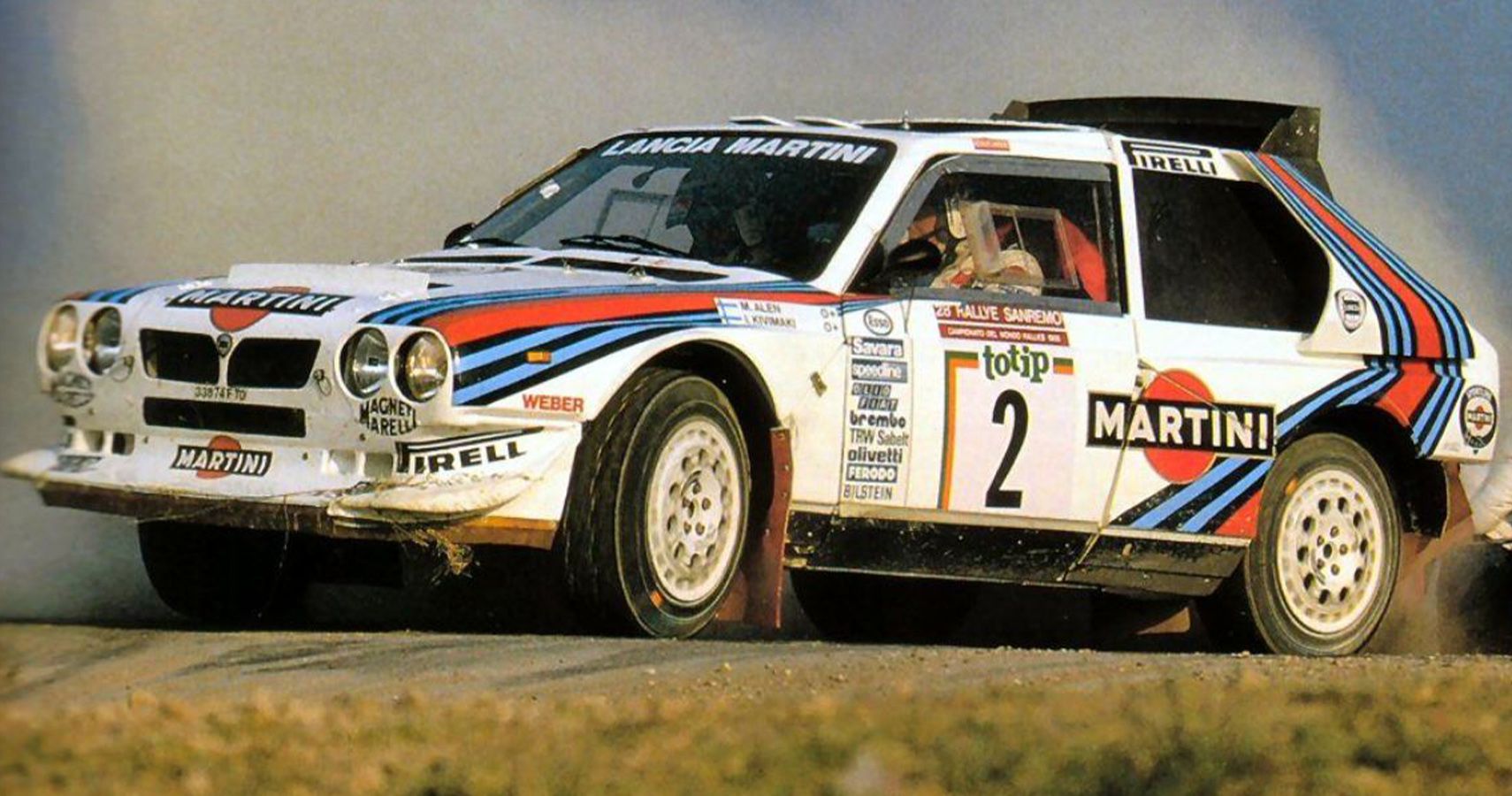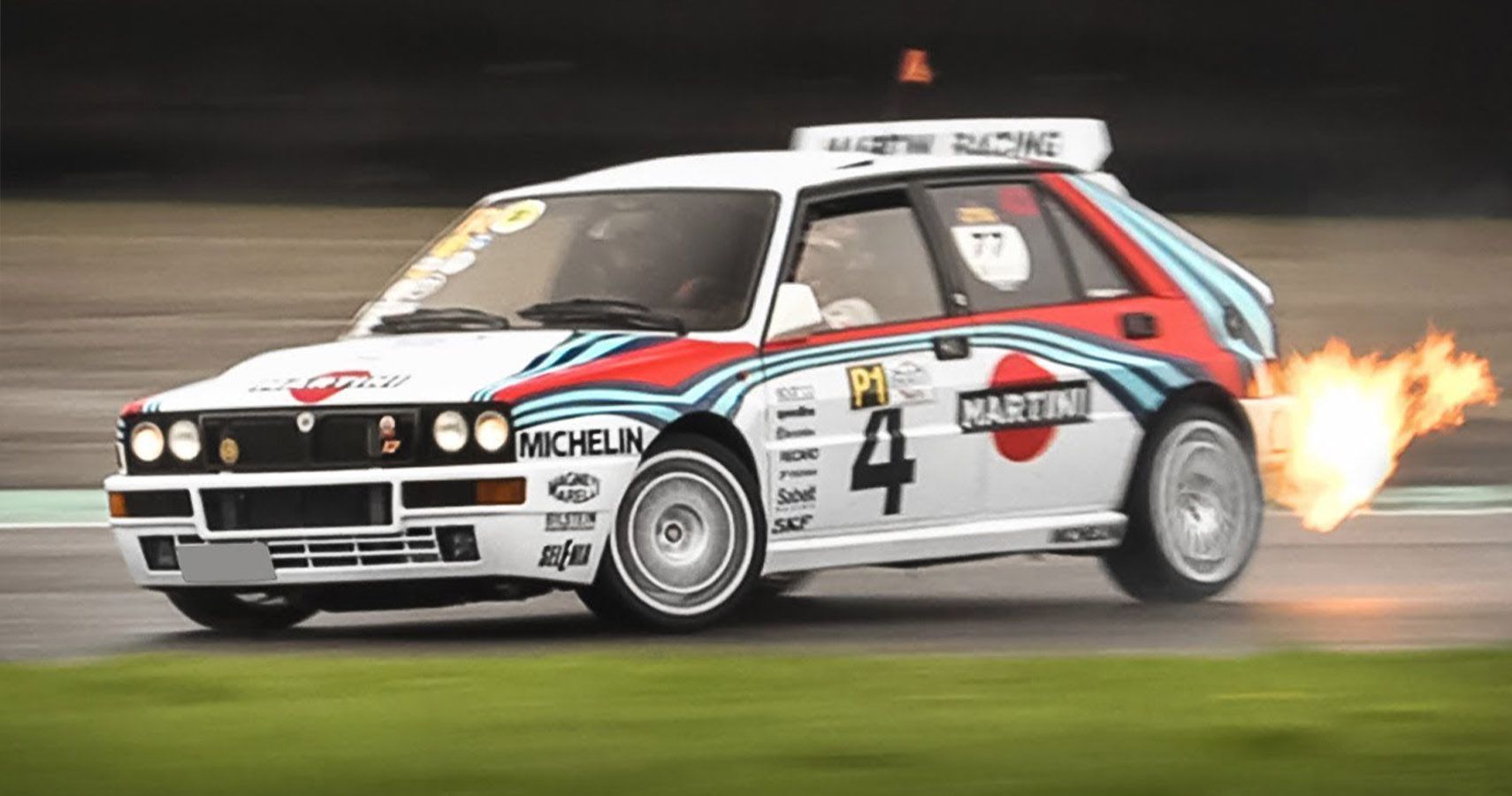Welcome to Off-Road Legends, a new series from HotCars where we will take a closer look at some of the most iconic and successful off-roaders of all time. From the most reliable pickup trucks we know and love to the most hardcore, Baja-prepped racing machines ever seen, Off-Road Legends highlights everything that allows vehicles to keep right on running when the pavement ends.
Our first two episodes focused on two American monsters: Snortin' Nortin and Big Oly. Now, we turn our attention to a svelte Italian sprinter, the Lancia Stratos HF that nonetheless dominated the dirt in 1970s rallying competition. Featuring one of the most iconic wedge-shaped designs of all time and a Dino V6 borrowed from Ferrari, the Stratos not only won multiple constructors titles but also inspired supercar design for decades to come.
A Concept Car Comes To Life
What would eventually become one of the world's most recognizable rally cars began as an even more angular concept car known as the Lancia Stratos Zero. Originally shown at the Turin Motor Show in 1970, the Zero's futuristic exterior emerged from the mind of none other than Marcello Gandini—who previously designed the Lamborghini Miura and went on to pen the 1980s' most indelible supercar, the Countach. At only 33 inches tall, the Zero sits over half a foot lower than Ford's already low GT40 and essentially requires the driver and passenger to lie down fully reclined in order to avoid bumping their heads on the vertically hinging hood-door combination.
Only one year later, Lancia debuted the Stratos HF at Turin, though early prototypes used a Lancia engine mounted behind the tiny cockpit. Lancia originally wanted to source the Dino V6 from Ferrari but only received 500 units at the very last minute before the public launch. With up to 320 horsepower on tap from the 2.4-liter mill, the competition Stratos might not sound too terribly impressive today—but keep in mind that the car could weigh under 2,000 pounds!
Iconic Alitalia Livery
Wearing by-now iconic Alitalia livery, the competition Stratos took rallying by storm. The lightweight, nimble design required significant bracing on the rear suspension uprights to handle the Dino V6's power output and severe torture testing of rally racing. A wheelbase of only 85.8 inches allowed the little Stratos to dance and drift around tight corners, winning numerous stages on the way to championship titles in 1974, '75, and '76. In fact, the recipe proved so potent that the privateers at Chardonnet Team drove a Stratos to victory at Monte Carlo as late as 1979.
Road Cars With Zero Creature Comforts
Lancia needed to produce 500 cars to homologate the Stratos for Group 4 competition, though that figure dropped to only 400 by the end of 1975. Estimates place the total number of Stratoses (Stratosi?) built at 492, including road and competition versions. For the public, Lancia detuned the Dino engine to 188 horsepower and 166 lb-ft of torque, while the weight increased to 2,161 pounds over the racing spec.
Despite receiving suede seat inserts, carpeting, and a wooden shift knob, the interior still feels absolutely cramped and minimalist, with little in the way of true amenities to distract from the fact that Lancia built the Stratos to win races, not cruise down the highway comfortably. Depending on gear ratios, some cars can top out at 144 miles per hour, while other struggle to even reach 70.
Setting The Stage For Group B's Demise
Stratos replaced the Stratos with the 037 and then the Delta S4. Both achieved significant rally success in the FIA's new Group B rally class, with the 037 representing the last rear-wheel-drive car to win a championship before Audi changed the game with Quattro all-wheel drive. Group B required fewer road cars and therefore, manufacturers upped the engineering ingenuity to the point that the Delta S4 seen above used both a supercharger and a turbocharger to produce up to 1,000 horsepower at up to 72 PSI of boost, all in a car that weighed under 2,000 pounds. All-wheel drive helped to tame that ungodly output but Group B grew more and more dangerous with such prodigious power and after Lancia factory driver Henri Toivonen and co-driver Sergio Cresto perished at the Tour de Corse in 1986, the FIA brought the Group B era to a close almost immediately.
And Then There Was Integrale
After Group B's end, manufacturers intent on further rally racing turned to Group A, which limited power output significantly in the hopes of producing safer competition. And here, even after the success of the stunning Stratos, sleek 037, and scary Delta S4, Lancia actually found the greatest success with a little hot hatch called the Delta HF Integrale. Widely regarded as the winningest rally car of all time, the Integrale in various stages of evolution went on to win Lancia six world championships between 1987 and 1992, as well as drivers' titles in 1987, '88, '89, and '91. All told, the Integrale won 46 rally races and six consecutive manufacturers' title stands as a world record to this day.
In the modern era, Integrale values boggle the mind, as higher-spec and rarer Evo II cars can fetch well into the six figures. But a Stratos like this Bring a Trailer listing from 2017 can command well into the half-million range (or more!) now, thanks in part to the angular, futuristic styling in addition to the model's significant rallying success. While Lancia now sits at the bottom of the Stellantis (née Fiat-Chrysler) totem pole, a number of companies now produce modern incarnations of the Stratos, 037, Delta S4, and Integrale in homage to some of Lancia's greatest hits over the decades. Meanwhile, the list of classic supercars with ballooning values that owe their wedge-inspired styling to the Stratos includes the Countach, Maserati Bora, Lotus Esprit, Lamborghini Diablo, and more. But no matter how much power those larger, later cars cram under the hood, none will ever claim the same legendary world rally heritage as the iconic Lancia Stratos.
Sources: youtube.com, bringatrailer.com, alitalia.com,

